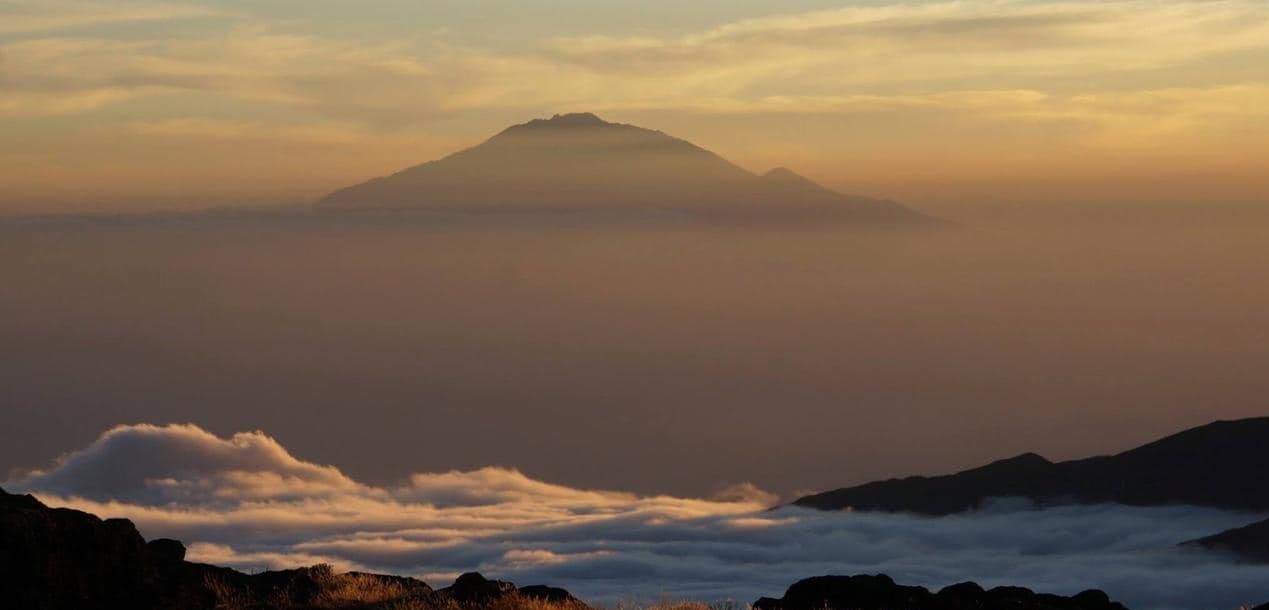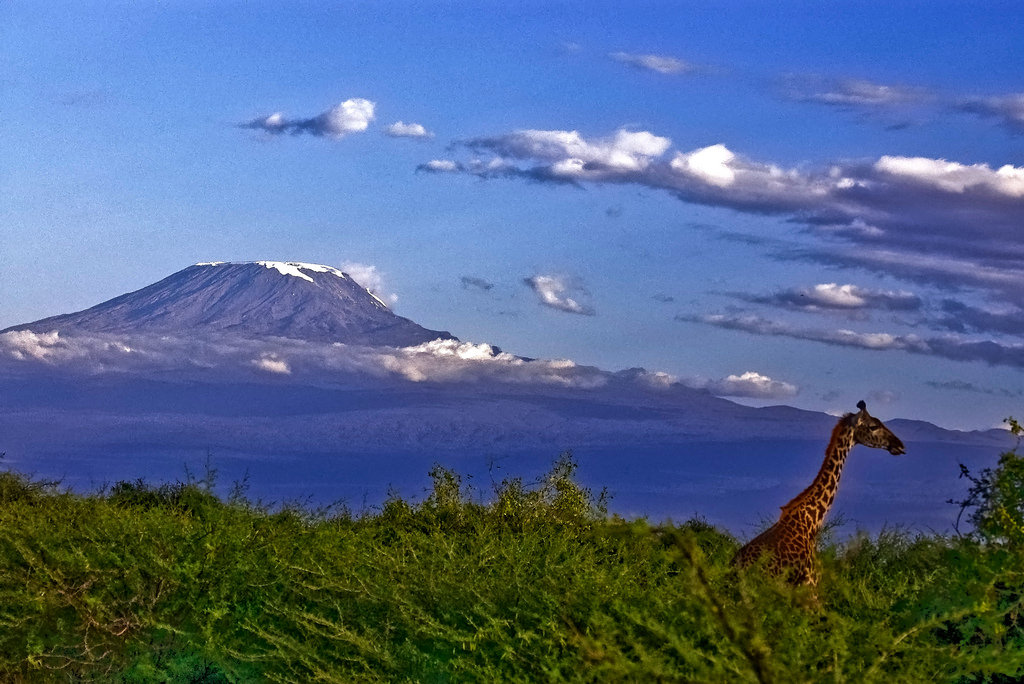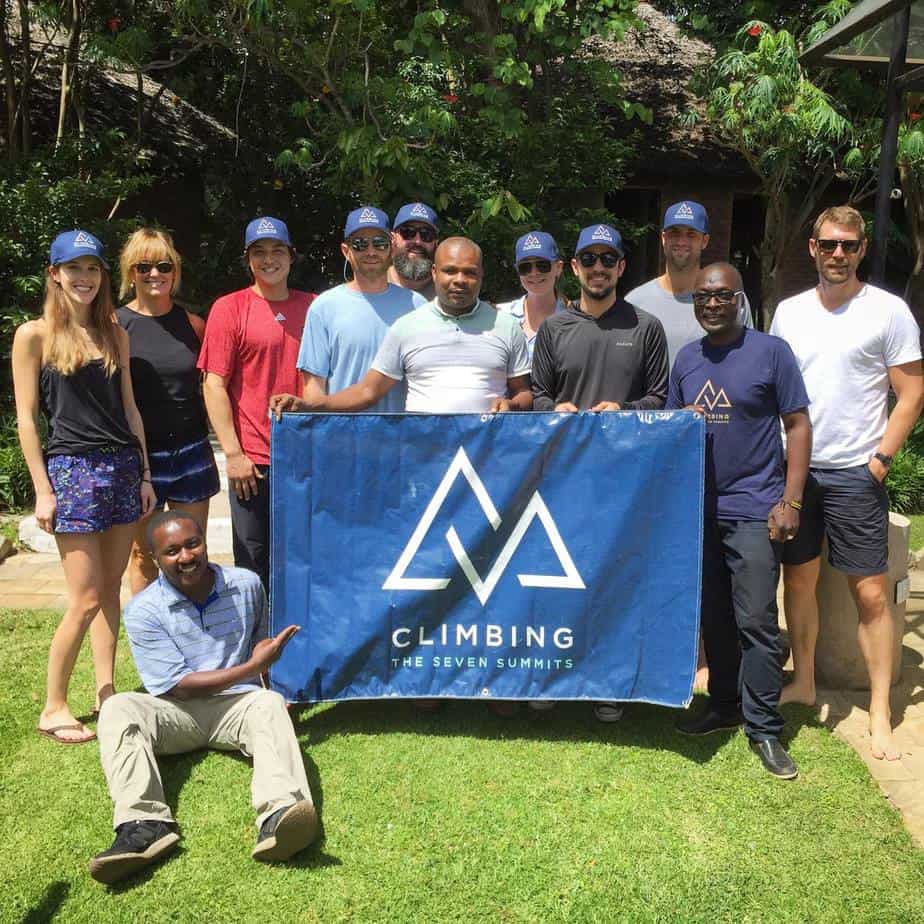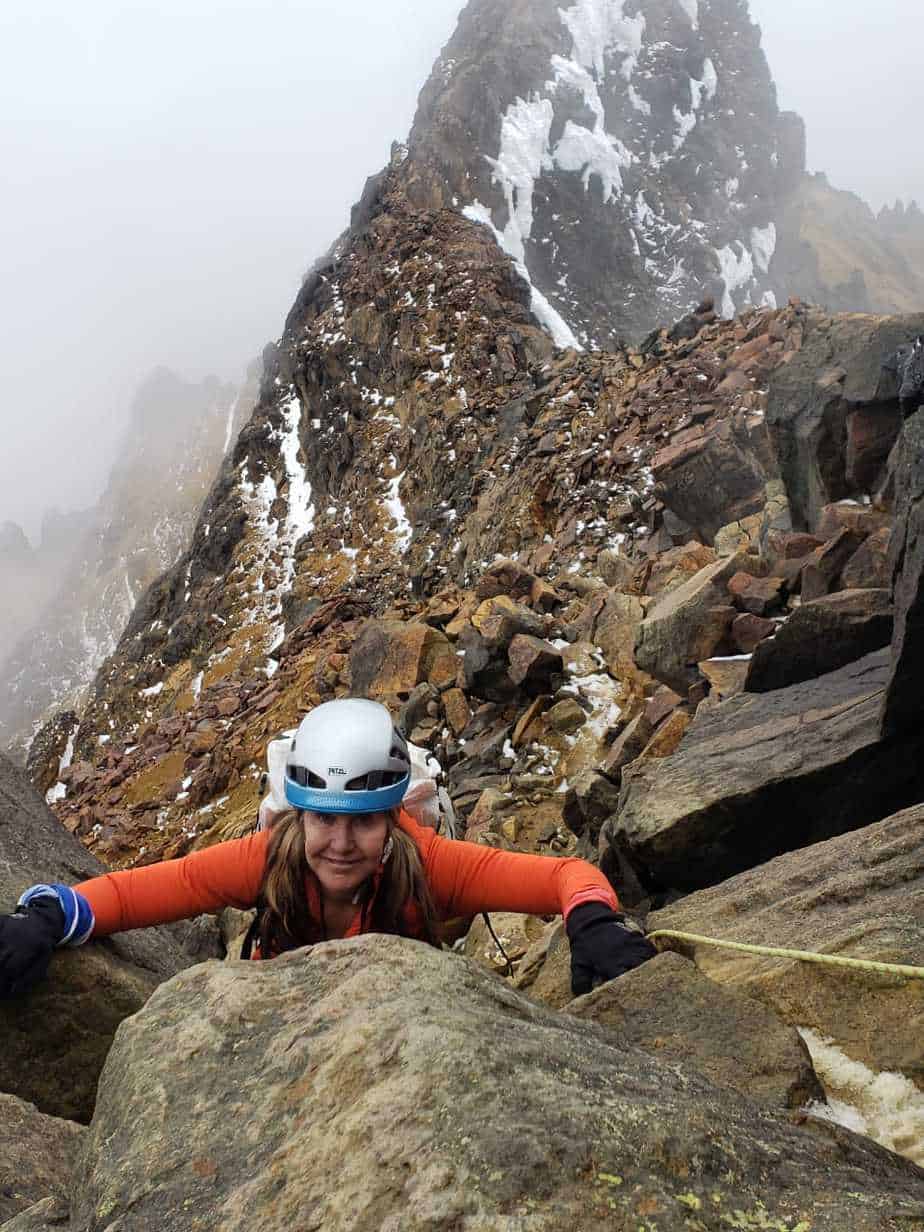100% on top of Kili
The Kilimanjaro private team have all made it successfully to the summit this morning, taking in the sunrise from just below the summit in perfect weather.
They were a bit nervous about the rain yesterday but they got lucky with a phenomenal day. They are now back at High Camp for a quick bite to eat and a rest and will continue down the mountain to Low Camp (Mweka Camp) this afternoon.
A good night's sleep and one final walk and they'll be back to hot showers, a yummy dinner, wifi and of course a celebratory safari!!
Nice work everyone.
Cheers
CTSS Team



...Poised for the Summit...
Hello everyone,
A quick update from our private team led by Mike on Kilimanjaro. They moved to High Camp overnight and today will go for the summit.
They'll be waking up over there shortly for an alpine start to head for the summit.
Everyone in great shape. Fingers crossed for good weather for them and we'll keep you updated with the latest as it comes to hand.
Cheers
CTSS Team
PS they had crepes and fresh watermelon and mango again for breakfast so if they tell you they were roughing it, you can officially raise an eyebrow :P



...Barranco Wall...
Today our private Kili team led by Mike are tackling the Barranco Wall on their way up to Karanga Camp.
They called in to let us know that they are enjoying stunning weather, phenomenal views, plenty of snow on the peak, sunny skies.
Today should be a bit of a shorter day today - about 4hrs as they steadily gain altitude vs yesterday which took about 6hrs.
They're not roughing it by any standards, for instance breakfast this morning was fresh mango and papaya with crepes...
Everyone doing great...


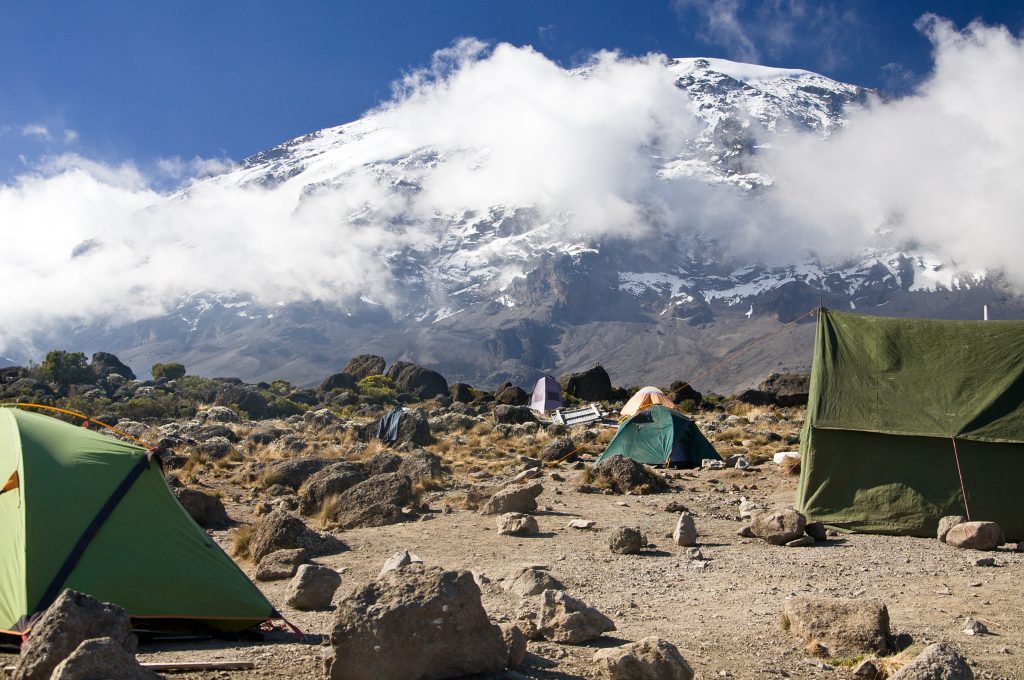
...Kili Private from Machame to Shira...
Hi All,
The team just called in - they had a great night at Shira Camp at (3,850m) and are heading off on the trail up to Barranco camp today, they'll reach a new high point at the lava towers (4,600m) and then drop back down a little to sleep low at 3,900m which is perfect for their acclimatization.
They have a reasonably big day ahead of them with about 6hrs of trekking.
They are full of glowing reports - the weather has been amazing, the food is incredible, the team are strong, bonding well and having heaps of fun with no altitude issues.
Tomorrow they hit the Barranco wall. All well on Kili.
Cheers
CTSS Team

...Kilimanjaro Private Begins...
Our private Kilimanjaro climb is underway with the team meeting in Arusha.
Yesterday they did gear checks and had their team meeting and a celebratory 5 star dinner at Arusha coffee plantation with some incredible local food and plenty of champagne.
They are setting off today heading up to Machame Camp gaining a few thousand feet of elevation. There's a little rain about this morning so fingers crossed for clearer skies this afternoon. There's certain to be snow about up high!
Time to leave the hot showers behind and get back into tent life!
Cheers
CTSS Team



... Ecuador 4 Summits in 10 Days ...
Rumiñahui, Cotopaxi, Cayembe, Illiniza. Team Ecuador finishes off the extension to the classic week on a fourth summit along the avenue of volcanoes. This time on Mt Illiniza.
Snow instabilities and high avalanche risk put Chimborazo out of play this time. So Team Ecuador adapted quickly. They shot over instead to the twin peaks of Illiniza Sur y Norte and tagged the rocky top of Iliniza Norte earlier this week. Nowhere else do we know of where a 10-day stretch hits four summits over 15,000 feet including snow, sleet, glaciers, rock scrambling, grassland trails, and some of the best sunrises around.
A spectacular place for some extreme altitude training outside the Himalaya. Congrats to Ann and Edgar for knocking one more out of the park. Cheers from the rest of Team Ecuador and your friends and support team here at the office.
-Team CTSS




..100% on Cayembe..
18, 996 feet achieved!
Updates in from Team Ecuador just back in range from the top of Mt. Cayembe - Ecuador's 3rd highest summit and the highest point on the equator anywhere around the planet.
The team rounds out an action-packed week with 100% summit success! An impressive finish for Becky, Ann, Juan Carlos, and Edgar. Congratulations to all. They report in with cold but solid weather overall and photos to follow once they hit civilization. For now it's next stop hot springs.
Cheers
Team CTSS






..All-Conditions Day on Cotopaxi..
Sun, snow, blowing winds, cold temps...Cotopaxi made herself known in all her various forms this morning! Reports are in from the team back down to the hacienda and reveling in the relative warmth once more.
Ann finally had her rematch with Cotopaxi and topped out today along with CTSS guide Juan Carlos. It was a brutal early morning push with snow and cold that only broke after hours of sustained climbing. So tough that they were the only two having made it to the top from the entire refuge this morning! Laying some strong foundations for big projects ahead this spring. Huge congrats to all for charging out in challenging conditions. Becky and Edgar also report in on a massive and happy effort. After more than three hours ascending the volcano they made the wise call to turn back and save those fingers and toes for another day.
And that day is in fact tomorrow! So much bang for your buck in Ecuador - it'll be a solid night's R&R tonight, a leisurely Ecuadorian-style breakfast, and then away midday for yet another volcano. Cayembe is on tap next and we'll keep you posted on the updates just as soon as the team returns from a well-deserved siesta.
Cheers
Team CTSS
Photos by CTSS guides Edgar & Juan Carlos

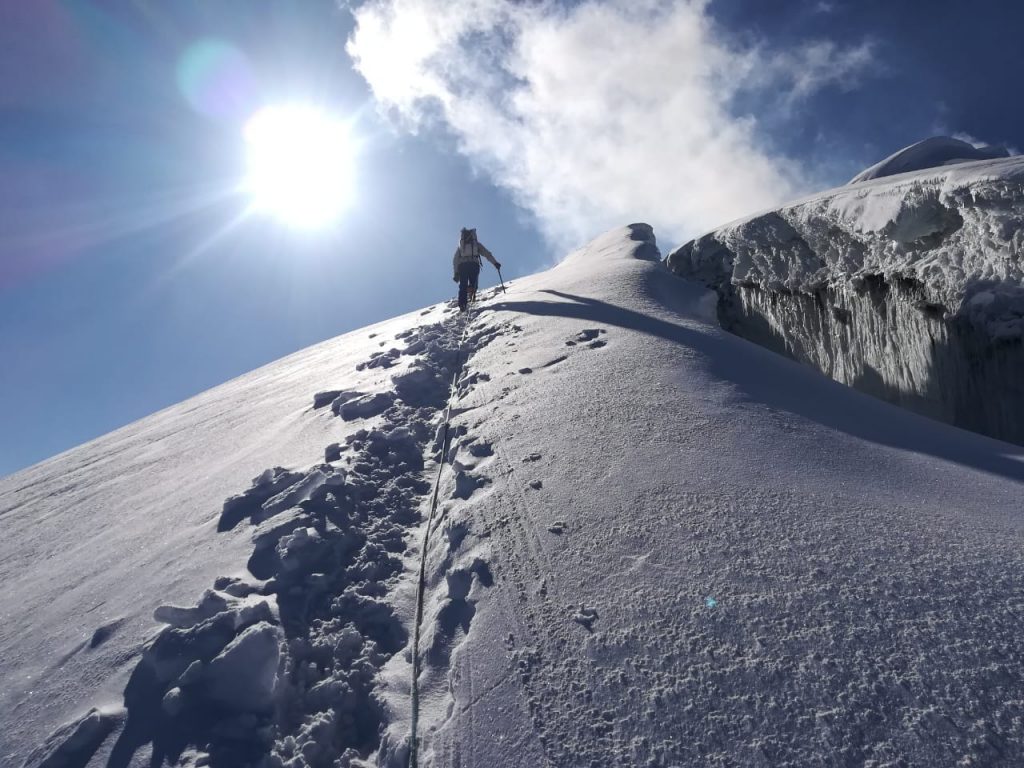






...Cotopaxi Team In Position..
A call just in now from CTSS guide Edgar that the team's made their way up to the high refuge on Cotopaxi and all is ready for their early alpine start late tonight/early tomorrow for their summit push. A 15,000 foot summit already knocked-off and next up a 19,000 foot summit. This team is on a mission!
We're watching the forecast both here on the ground and on the mountain itself and it looks like we're gonna sneak in for a nice window of weather just before the winds roll in so fingers crossed for a warm night for Team Ecuador.
In the meantime today's nearly cloudless view setting off from 12,000 feet - thanks to Edgar.
Cheers
Team CTSS

...Team Ecuador Tag 15,000 ft....
A check-in from Team Ecuador reporting the "suffering" of the Ecuadorian climbing life. First up was a drive out on the Pan-American highway and then the dusty mountain roads up and into the Cotopaxi National Park for an acclimatization hike on Rumiñahui over the weekend. Grassland ridges, rocky summits, and team members Becky and Ann report in with even a condor spotting - Ecuador's national bird! Some photos of Ann, Becky, and Edgar on this 15,000 foot stunner just below.
The team now settling in at Tambopaxi Lodge complete with floor to ceiling windows overlooking the full stretch of Cotopaxi volcano just beyond the sweeping grasslands out the door. The lodge is the only one within the park and sits just on the edge of the volcanoe's boulder fields. At over 12,000 feet and with five other Andean volcanoes dotting the skyline it's a pretty spectacular vantage point for building up red blood cells.
More news from the days up high coming soon.
Cheers
Team CTSS







